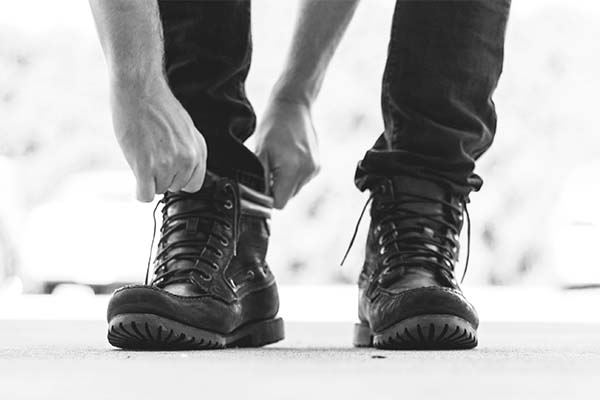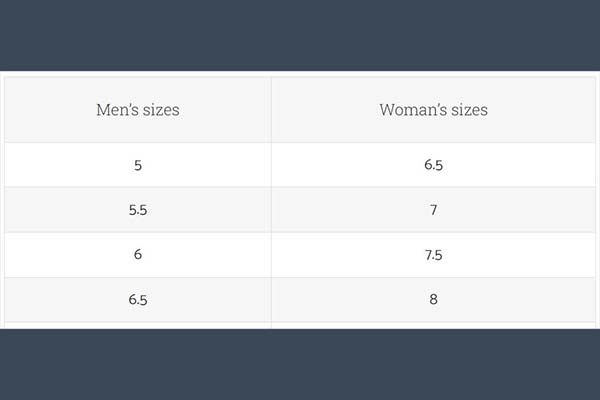How Shoes Should Fit: A Comprehensive Guide
Properly fitting shoes are essential for both foot health and overall comfort. Ill-fitting shoes can lead to foot pain, blisters, and other foot problems.
In this article, we’ll explore how shoes should fit and offer some tips for getting the right shoe size and style for your feet.
Most people have experienced the discomfort of wearing shoes that don’t fit properly. This can lead to a variety of problems, from blisters and calluses to more serious issues like plantar fasciitis or even stress fractures. It’s important to understand what a proper shoe fit looks like so that you can find shoes that are both comfortable and supportive.
How to Measure Your Feet
The first step in finding shoes that fit properly is to measure your feet. The most accurate way to do this is with a Brannock device, which is a tool that measures both the length and width of your feet. You can also measure your feet at home by tracing your foot onto a piece of paper and measuring the length and width.
Shoe Sizing and Fit
Different brands and styles of shoes may have different sizing systems, so it’s important to know your foot measurements and be aware of how different shoes fit. In general, shoes should fit comfortably with no pinching or rubbing. You should also be able to wiggle your toes freely, and the shoe should not slip off your heel when you walk. Arch support and footbed comfort are also important factors to consider. Read our article: Why do shoe sizes vary from brand to brand?
Characteristics of a Good Shoe Fit
The following are some characteristics of a good shoe fit:
Proper heel fit: Your heel should not slip out of the shoe when you walk, but there should also be no rubbing or discomfort.
Proper toe fit: There should be some wiggle room for your toes, but not too much. Your toes should not hit the end of the shoe when you walk.
Arch support: The shoe should provide adequate support for your arches.
Footbed comfort: The footbed should be comfortable and supportive.
Types of Shoes and Their Specific Fit Requirements
Athletic Shoes: Athletic shoes, such as running shoes or basketball shoes, should fit snugly but not be too tight. They should also provide ample support for the foot during physical activity.
Dress Shoes: Dress shoes, such as loafers or oxfords, should fit comfortably but may have a tighter fit around the ankle. They should also have a slight heel lift to provide proper arch support.
Boots: Boots come in a variety of styles, including work boots, hiking boots, and fashion boots. Regardless of the style, boots should have a snug fit around the ankle and provide enough room for your toes to move freely. The toe box should be wide enough to accommodate thicker socks, and there should be ample arch support and cushioning in the footbed. Additionally, work and hiking boots should have a sturdy and supportive sole to provide traction and stability on uneven surfaces.
Sandals and Flip-Flops: Sandals and flip-flops should fit comfortably and have a slight heel lift to provide arch support. They should also have enough room for your toes to move freely and not cause discomfort.
Tips for Getting the Right Shoe Fit
Here are some tips for getting the right shoe fit:
- Try on shoes in the afternoon or evening when your feet are at their largest.
- Bring the type of socks you’ll wear with the shoes.
- Walk around in the shoes before purchasing to get a feel for how they fit and support your feet.
- Break in new shoes gradually to give them time to mold to the shape of your foot.
Factors that can make shoes feel tight
There are several factors that can contribute to the feeling of tightness in new shoes. These include:
- Material: Depending on the material used to construct the shoe, it may be stiff and take time to mold to the shape of your foot. For example, leather shoes may feel especially tight when first worn.
- Construction: Certain types or styles of shoes may have a tighter fit than others. For example, running shoes are often designed to fit snugly in order to provide support and stability during physical activity.
- Sizing: If you haven’t been properly measured or if you’re between sizes, shoes may feel tight. It’s important to note that different brands and styles of shoes may have different sizing systems, so it’s always a good idea to try shoes on before purchasing to ensure a proper fit.
Is it better to size up or down in shoes?
When it comes to shoe sizing, there is no one-size-fits-all answer to this question. It really depends on the individual shoe and the shape of your foot. In general, it’s best to try on both a half size up and a half size down from your usual shoe size to see which feels the most comfortable. Keep in mind that your foot size and shape can change over time, so it’s always a good idea to get measured periodically, especially if you haven’t been measured in a while.
Should my toe touch the end of my shoe?
This is another common question when it comes to shoe sizing. While there is no one answer that applies to all shoes, a good rule of thumb is to leave about a half inch of space between your longest toe and the end of the shoe. This allows for some wiggle room and prevents your toes from hitting the end of the shoe with each step. However, keep in mind that some shoes, such as running shoes, may have a tighter fit and may require a closer fit between your toes and the end of the shoe.
How much space is too much in shoes?
While it’s important to have some space between your toes and the end of the shoe, too much space can also be a problem. If your foot slides around too much inside the shoe, it can cause blisters, calluses, and other foot problems. In general, there should be enough space in the shoe to wiggle your toes comfortably, but not so much space that your foot moves around inside the shoe.
Tips for dealing with tight shoes
If you’re experiencing tightness in new shoes, there are several things you can do to alleviate the discomfort. Here are a few tips:
- Breaking in: Gradually break in your new shoes by wearing them for short periods of time. Over time, the shoes will begin to mold to the shape of your foot, making them more comfortable.
- Stretching: Use different stretching methods to loosen up the shoes. This could include stuffing the shoes with newspaper or using a shoe stretcher.
- Sizing: Ensure that you’re wearing the right size and style of shoe for your foot. Consider going to a professional shoe store to get measured and fitted for shoes.
Conclusion
Properly fitting shoes are essential for both foot health and overall comfort. It’s important to measure your feet, be aware of different sizing systems, and consider the specific fit requirements for different types of shoes. By following these tips and guidelines, you can find shoes that fit properly and support your feet.






